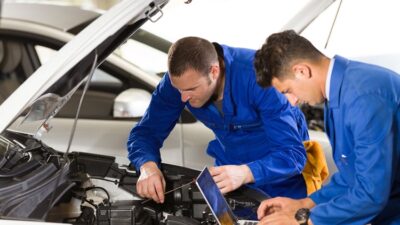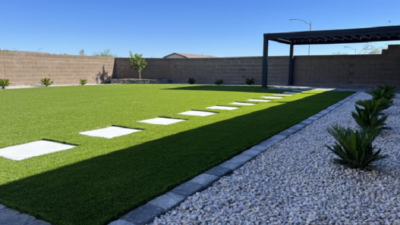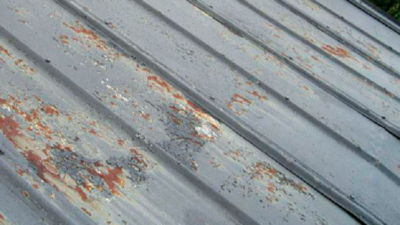Work Boots seem like a self-explanatory part of your equipment kit. Well, that kind of thinking is what holds you back from making the highest security affordable.
Work boots for men are versatile and offer products for any worksite. The trick is to know how to pick them.
But, even better than that, the catch is to know how they protect you. That way, you get the most protection from a pair of work boots.
Steel-Toe Cage
If you ever spent five minutes reading about work boots, you heard about the steel-toe cage. The revolutionary invention represents a piece of molded metal that covers the metatarsal bone.
Concept
The idea of the steel-toe cage is to protect the front of the foot. The initial design of the metatarsal protection had a steel plate placed over the toes and the front part of the foot.
Later on, the concept changed to incorporate protection for the whole foot. Even with the variety of models, the idea remains almost the same for the last century.
The goal of engineers today is to accommodate metatarsal protection with various materials. Currently, it has become a matter of innovation and the complete production process.
Use
The need for metatarsal protection came with the industrial revolution of the last century. Working with steel, oil, and machines was a hazardous undertaking. While there were recommendations for protective equipment, workers needed protective footwear.
Thus, German engineers find a way to stop punctures and crushing of the feet. The concept came to the American continent and found its place after the war. It became mandatory for railroad work, construction, and oil rigs.
In the last stage of development, engineers included new materials for protection. That innovation led to a variety of models for almost any imaginable workplace.
Materials
The metatarsal protection consists of three primary materials. These are steel, metal alloys, and composite materials.
Each metatarsal protection helps to combat specific worksite conditions. For example, in extreme cold, steel may lead to injuries and frostbite. In such conditions using composite materials works much better.
Thus, you may find the best work boots for your workplace solely by looking at the metatarsal protection. Of course, ensure that other features match to protect you against work hazards.
Work Hazards
Metatarsal protection is but a first security reason to wear PPE footwear. But, it is far from the only hazard you may experience on the job site. Instead, each work site comes with a specific set of work hazards. Therefore, it is up to you to match the work boot’s features with work hazards.
Common Work Hazards
Some work hazards you may encounter regardless of the worksite. Your work boots should provide minimum protection against work hazards such as:
- Slipping
- Cold
- Electricity
- Water
- Punctures
- Crushes
You may encounter each of these work hazards on almost any job site. Anti-grip properties, metatarsal protection, and waterproof capabilities are mandatory for any work boot.
Specific Work Hazards
There are work-specific hazards. It is in your best interest to counter these hazards with your work boots. Specific work hazards include:
- Extreme cold
- Heat
- Environment-based hazards
- Oil
- Terrain-based hazards
For example, you may work as a logger. Then, you may work in work boots without a metatarsal plate, but you need a firm grip. Protection against slipping is mandatory on such a worksite.
Environment
The environment is a serious concern for any worker. Even if you work indoors, you have to consider outside conditions while coming to work. You have to move in that climate, and it damages your footwear nonetheless.
Terrain
The terrain is crucial for workers that work outside. To broaden the term, you may put the equation sign between terrain and work surface. For example, a person working outside on a slippery surface needs more grip on their sole. The problems with terrain include:
- Slippery surfaces
- Rough terrains
- Mud
- Frozen surfaces
There are work boots for terrains with these exact traits. You may even look for brands that produce work boots for those conditions.
Climate
Climate is another crucial issue for outside workers. Also, it relates more to the outdoor workplaces, but it may affect those indoors as well. Climate always accompanies the traits of the terrain. Thus, you can get a pair of work boots to get protection from both hazards. Climate hazards include:
- Cold climate
- Warm climate
- Climates with extreme temperatures
While climate hazards are valuable, always look for the terrain hazards first.
Durability
So far, you had a chance to learn about the common hazards. The reason for this is to understand how they relate to materials. And how materials relate to the durability of the work boots.
Materials
Inspecting workplace hazards is necessary before you purchase a pair of work boots. That is the only way to protect your feet against them and ensure total productivity.
The golden rule of work boots shopping is to pair up features and materials to hazards. In the example of the outdoor worksite, you want work boots to have features such as:
- Full-grain leather
- GORE-TEX soles
- Rubber
- Nylon
- Composite-toe protection
- Waterproof membrane
These combinations of material are common in premium work boots for outdoor use. But, these materials need actual quality to last on your job site.
Longevity
Make sure to buy work boots from premium vendors. That is the only way to ensure that materials last. And that they are worth the money you pay for them.
With that, you can buy a pair of work boots for any job site.
Ergonomics
By now, you have an idea what are the primary features of work boots. And, you know how to look for them to counterwork hazards. Yet, there are other safety reasons to wear boots. These are ergonomics.
When you think of safety reasons, the first association relates to injuries. However, there is another type of injury that comes from wearing inappropriate footwear. For example, you may get a variety of health and foot problems from bad footwear.
Ergonomics are also a safe reason to wear work boots. Always look at the insoles before you purchase any type of work boots.
Dry Feet
Along with that, you have the problem of keeping your feet dry. Work boots may protect you against water. However, your feet sweat while you work, which leads to unpleasant experiences. Not only are wet feet uncomfortable, but they may also lead to various infections.
Luckily, there are work boots with moisture-wicking properties. They keep the feet dry and allow you to work without discomfort.
And that leads to the final and most valuable precaution you may undertake during work. This is why it’s important to choose the best waterproof work boots if working outdoors.
Productivity
The most valuable protection you may get comes from a steady mind. Working in construction, outdoors, or oil rigs requires a cool head. All it takes is a single mistake to sustain a life-altering injury. Proper footwear helps you to stay productive.
With that, they encompass everything you need for excellent work performance. And that is why you wear work boots. They keep you safe at all times.
Try Work Boots
There are many reasons to wear work boots. Safety remains the priority.
Pair up the features of the work boots with hazards you encounter on your job site. That is the best way to remain productive and achieve excellence with all your undertakings. Learn more about the safety measure you should never miss before going to work, on this website: https://www.celebrityhealthinsider.com/.










Comments